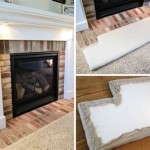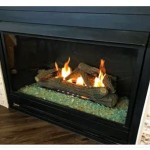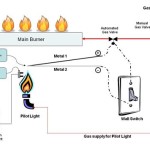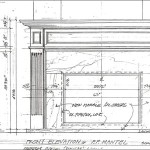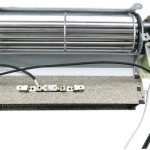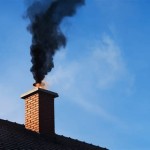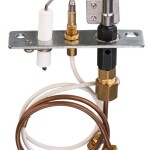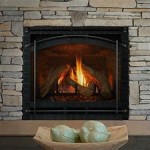The Enduring Appeal of Brownstone Fireplaces
Brownstone fireplaces represent a distinctive architectural feature, particularly prevalent in urban dwellings constructed during the 19th century. The term "brownstone" itself refers to a reddish-brown sandstone, widely used as a building material due to its relative ease of quarrying and shaping. When incorporated into fireplace designs, brownstone imparts a sense of history, solidity, and warmth to the interior space. The unique characteristics of the stone, its texture, and color variations contribute to the aesthetic appeal of these fireplaces, making them desirable features for homeowners seeking to preserve or recreate a specific architectural style.
The aesthetic properties of brownstone fireplaces extend beyond mere visual appeal. The stone's natural texture, often exhibiting subtle variations and imperfections, creates a tactile experience that is both comforting and engaging. The reddish-brown hue complements a wide range of interior design palettes, from traditional to contemporary. Furthermore, the mass of the stone contributes to its functionality. Brownstone, like other types of stone, possesses excellent thermal properties. It absorbs heat efficiently and radiates it slowly, making a brownstone fireplace a functional element in maintaining a comfortable indoor temperature. This thermal mass effect can be particularly beneficial during colder months, reducing reliance on other heating systems.
The installation and maintenance of a brownstone fireplace require careful consideration. Due to its weight, proper structural support is crucial. Professional installation is highly recommended to ensure the fireplace meets safety standards and building codes. Over time, brownstone can be susceptible to weathering, particularly if exposed to moisture. Regular cleaning and occasional sealing can help protect the stone from damage and maintain its appearance. The selection of appropriate cleaning products is essential to avoid damaging the surface of the stone. Harsh chemicals or abrasive cleaners should be avoided in favor of gentler, stone-specific solutions.
Understanding Brownstone Composition and Properties
Brownstone is primarily composed of sand grains cemented together by minerals such as iron oxide, calcite, or silica. The iron oxide is responsible for the characteristic reddish-brown color. Variations in the mineral composition and grain size contribute to the unique appearance of each piece of brownstone. The porosity of the stone, a measure of its ability to absorb water, is an important consideration for both installation and maintenance. Higher porosity can increase the risk of staining or damage from moisture. Therefore, sealing the brownstone surface can significantly reduce its susceptibility to water absorption. The type of sealant used should be compatible with the stone and allow it to breathe, preventing moisture from being trapped within the stone.
The structural integrity of brownstone depends on several factors, including the quality of the stone, the method of quarrying, and the presence of any pre-existing cracks or weaknesses. Brownstone used for fireplace construction should be carefully inspected for any signs of damage before installation. Reputable suppliers typically offer brownstone that has been tested and graded for quality and durability. Matching the existing brownstone in older structures can be challenging. Variations in color and texture can occur between different quarries or even within the same quarry. Experienced stonemasons can often blend different pieces of brownstone to create a cohesive and visually appealing appearance.
Design Considerations for Brownstone Fireplaces
The design of a brownstone fireplace can range from simple and understated to elaborate and ornate. Common design elements include mantels, hearths, and decorative carvings. The mantel, a shelf above the fireplace opening, provides a focal point for displaying artwork, photographs, or other decorative items. The hearth, a non-combustible area in front of the fireplace, protects the surrounding floor from sparks and embers. Decorative carvings, often incorporating floral motifs, geometric patterns, or allegorical figures, can add a touch of elegance and sophistication to the fireplace design. The overall design should be consistent with the architectural style of the building and the preferences of the homeowner.
When incorporating a brownstone fireplace into a modern interior, it is important to consider the scale and proportion of the fireplace in relation to the surrounding space. A large, imposing fireplace might overwhelm a small room, while a smaller fireplace could get lost in a larger space. The color and texture of the brownstone should also be carefully considered in relation to the other materials and finishes in the room. Contrasting the brownstone with lighter colors can create a striking visual effect, while complementing it with warmer tones can create a more cohesive and harmonious atmosphere. The choice of furniture and accessories can also influence the overall aesthetic of the fireplace area.
Maintenance and Restoration of Brownstone Fireplaces
Regular cleaning and maintenance are essential for preserving the appearance and structural integrity of a brownstone fireplace. Dust and debris should be removed regularly with a soft brush or vacuum cleaner. Stains can be removed with a mild detergent and water. However, it is important to test the cleaning solution on an inconspicuous area first to ensure it does not damage the stone. For more stubborn stains, specialized stone cleaning products may be necessary. It is important to follow the manufacturer's instructions carefully and to avoid using abrasive cleaners or harsh chemicals.
Over time, brownstone fireplaces may require more extensive restoration work. Cracks, chips, or spalling (the flaking or crumbling of the stone surface) can occur due to weathering, age, or structural movement. Repairing these types of damage requires the expertise of a skilled stonemason. The stonemason will typically remove the damaged stone and replace it with new stone that is carefully matched to the existing stone in terms of color, texture, and composition. In some cases, it may be possible to repair the damaged stone with a patching compound. However, this is generally only suitable for minor repairs. Repointing, the process of replacing the mortar between the stones, is also an important part of maintaining the structural integrity of a brownstone fireplace. Loose or crumbling mortar can allow water to penetrate the stone, leading to further damage.

Light Stone Fireplace Inspiration Taryn Whiteaker Designs

Tumbled Weatheredge Limestone Fireplaces Accent Walls Colonial Brick Stone Inc

4 Natural Stacked Stone Fireplaces For Your Dream Design

The 21 Most Gorgeous Fireplaces We Ve Ever Seen New York Brownstone Home Interior Design

I Can T Stand My Ugly Stone Fireplace What Do Laurel Home

50 Sensational Stone Fireplaces To Warm Your Senses

Quality Stone Stacked Dark Brown Faux Panel

Natural Stone Fireplaces Using Weatheredge Limestone Colonial Brick Inc

How To Choose Colour Around A Stone Fireplace

Gray Stacked Stone Fireplace With Black Hearth Design Ideas S Remodel And Deco Designs Paint Colors For Living Room
Related Posts

